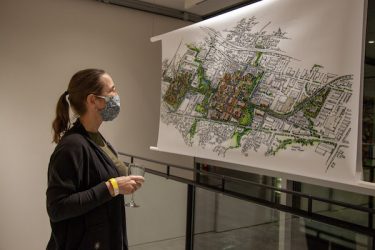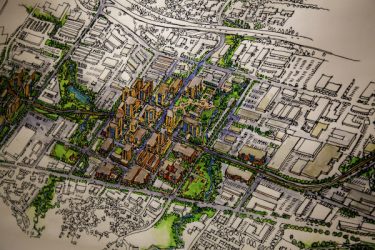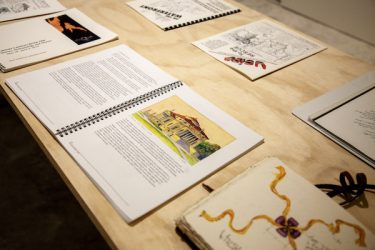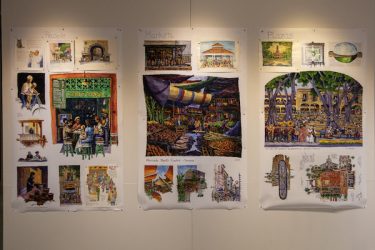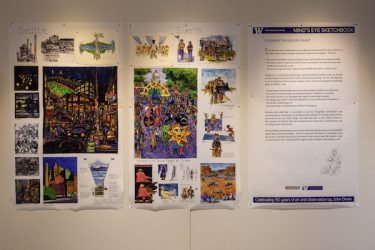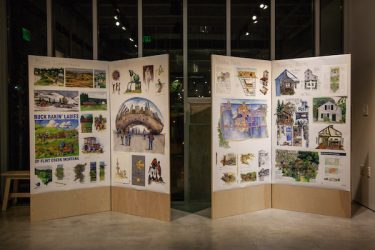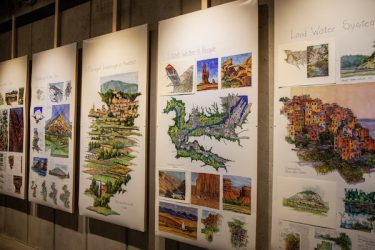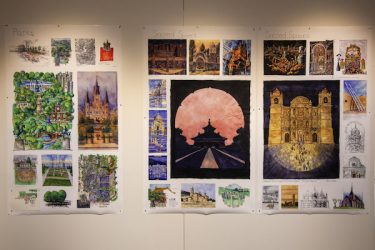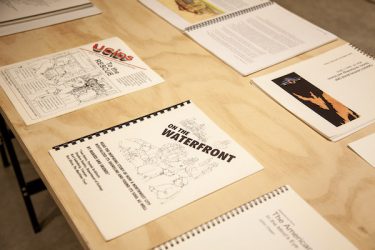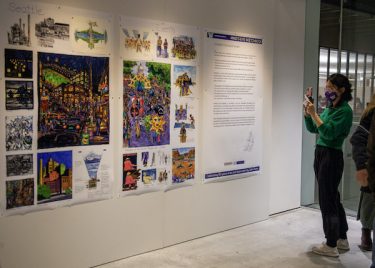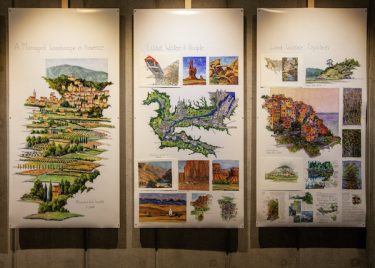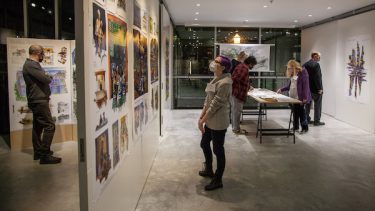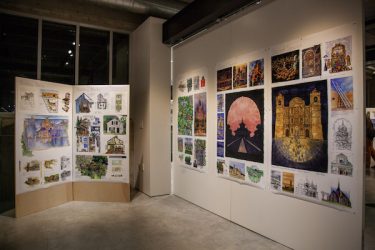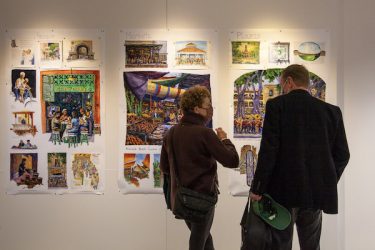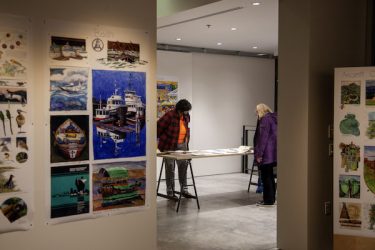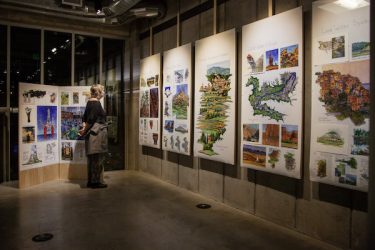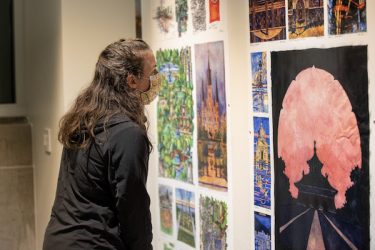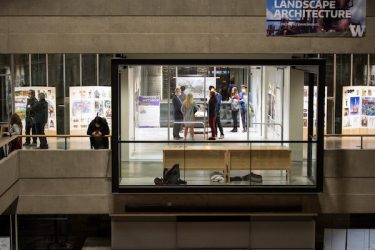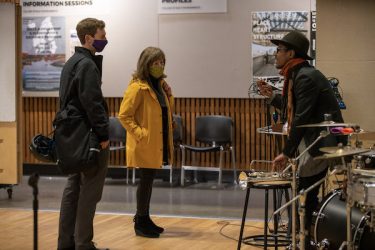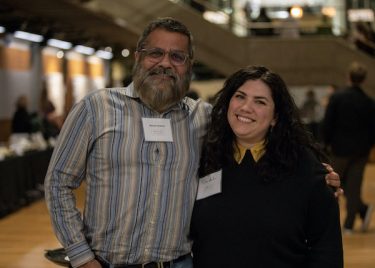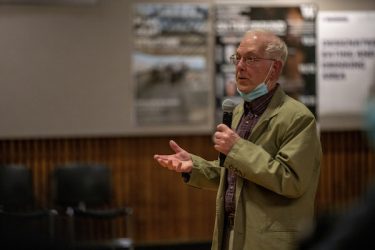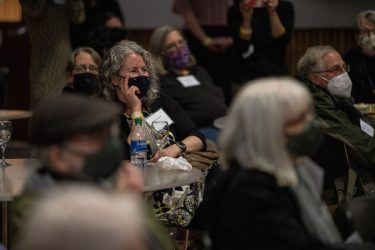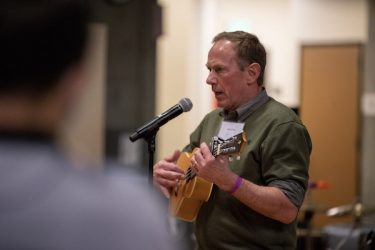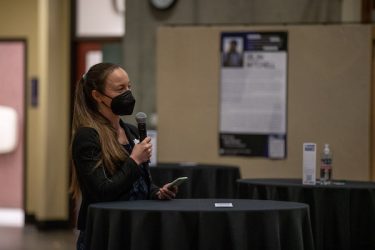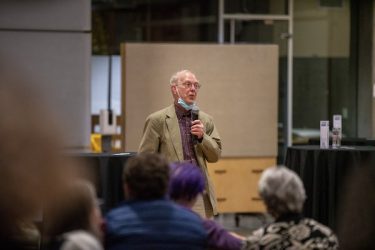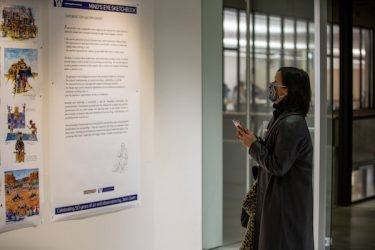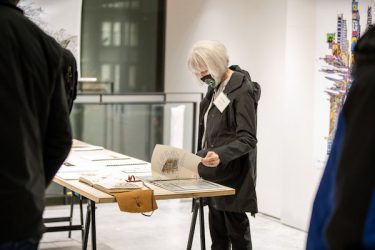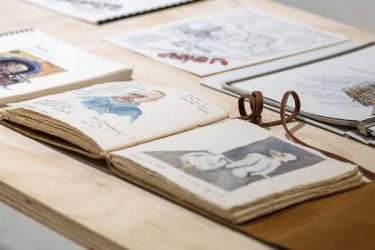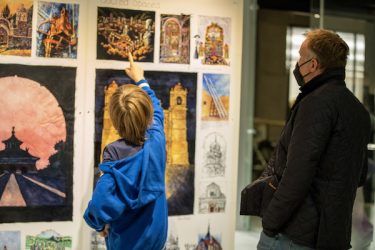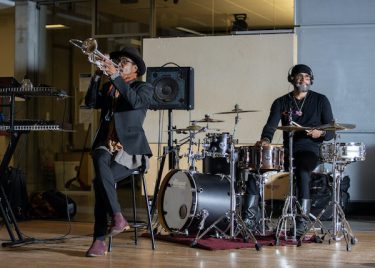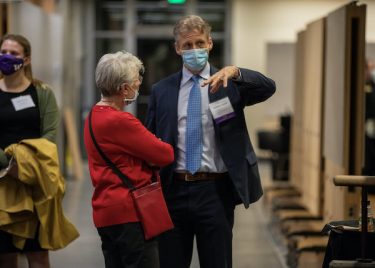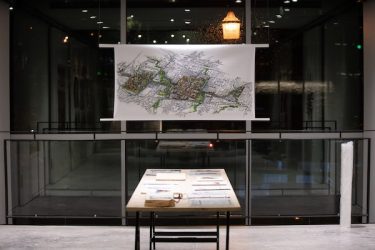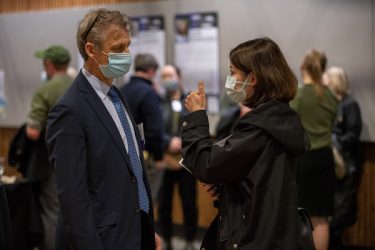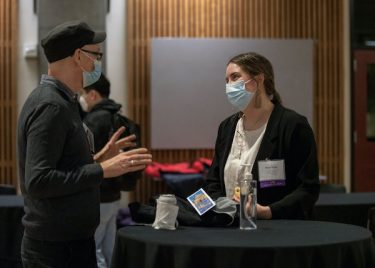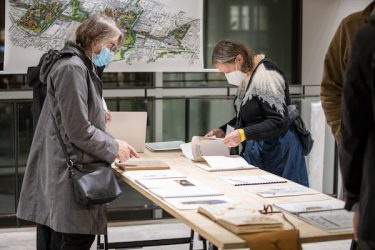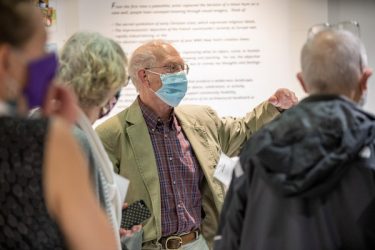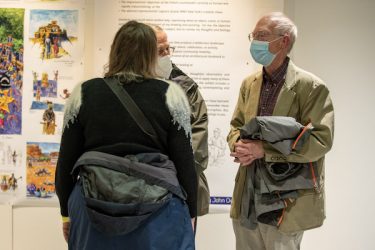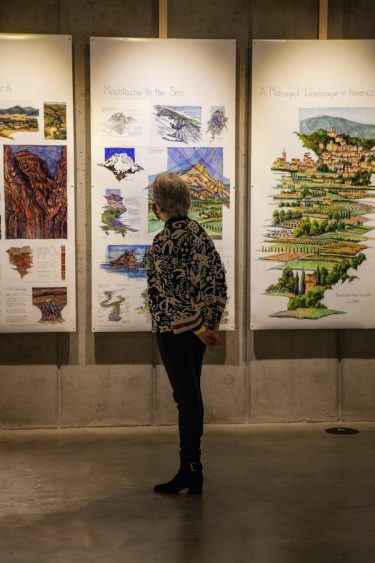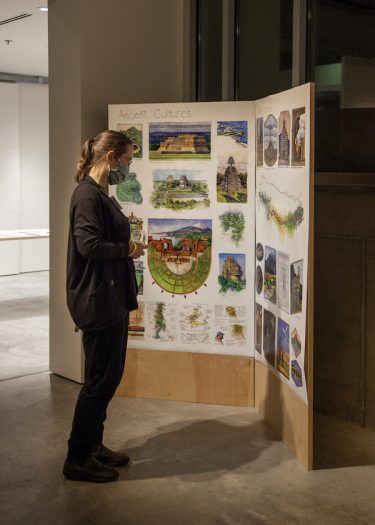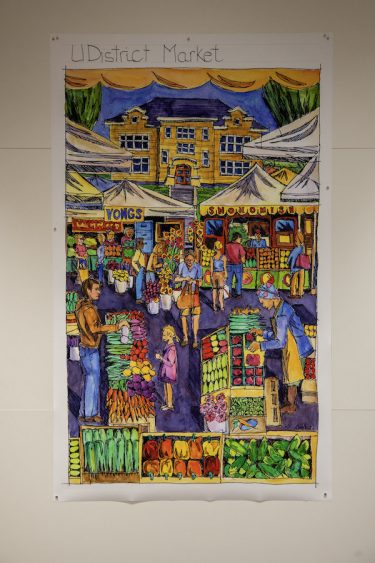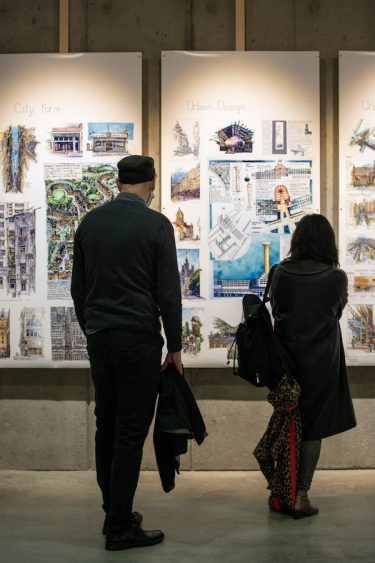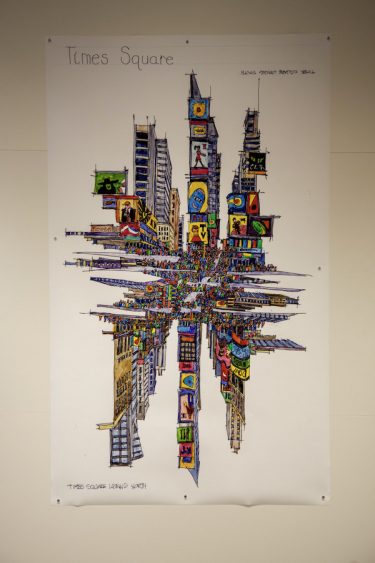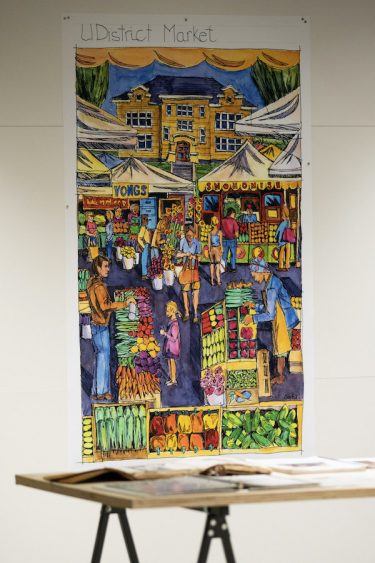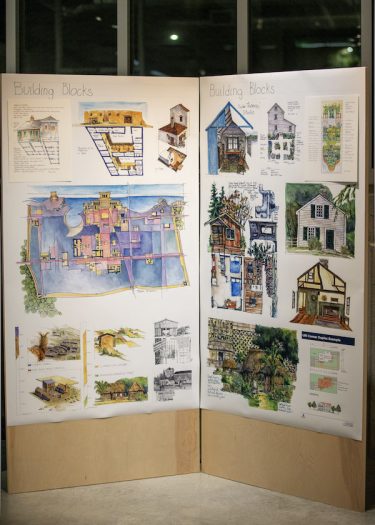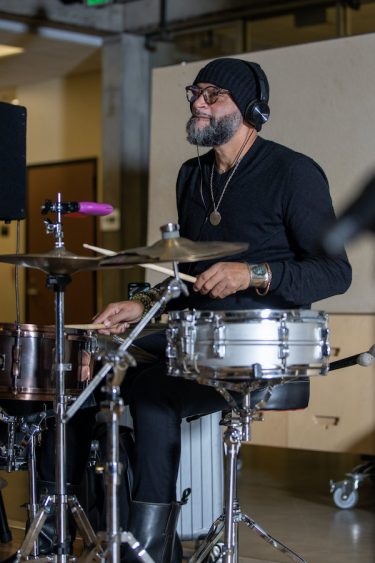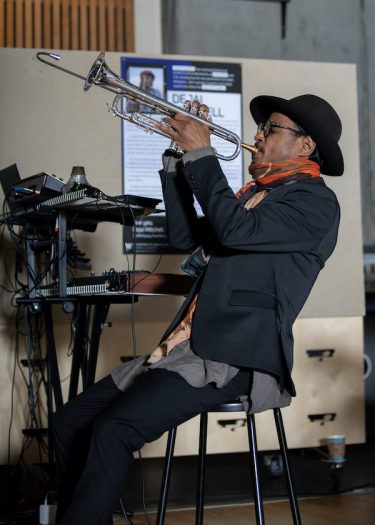Researchers at UW, including affiliate associate professor of urban design and planning Philip Hurvitz, reveal the various health and economic benefits derived from the sweetened beverage tax. | UW News
Visiting Scholar: Chung Ho Kim
As a visiting scholar in the Department of Urban Design and Planning, Chung Ho Kim has three goals: reconnect, research, and refresh.
UW students win ASFPM competition
A team of UW students, including CBE student Ziyang Liu, won 1st place and a $1000 scholarship at the Association of State Floodplain Managers (ASFPM) 12th Annual Collegiate Student Paper Competition for their paper, “Threshold-Based Planning for Westport, Washington: a Case Study.
CEP Senior, Talia Kertsman, recognized in Husky 100
Congratulations Talia, CEP Senior ’22, for being recognized as a #Husky100 student! “I hope to work at the intersection of equitable community development and education, thinking about how students and educators can co-create spaces of learning, inside and outside the classroom.”
Bothell banned cars from Main Street in response to COVID. They may never return
Branden Born, associate professor of urban design and planning, talks about how the pandemic provided cities with an opportunity to explore and experiment. | The Seattle Times
Student Spotlight | Peter T. Dunn
We sat down with PhD candidate, Peter T. Dunn, to hear about his research within the College of Built Environments and what has made his time here as both a student and teacher successful.
Please introduce yourself.
P: I’m a student in the interdisciplinary PhD program in Urban Design and Planning. I have also worked as a TA and taught several urban planning classes. I’ve been a research assistant on a couple of projects, but my dissertation focuses on the question of how technology is shaping cities and how we ought to respond to that.
There’s a lot of exciting stuff happening with technology and cities – and a lot of fear. Part of what I’m trying to do is put people back into the picture and think about where human beings are in this story. All of these essential and longstanding challenges of the city are really political questions about how we get along together, how we make decisions together, and whose values and visions count when we’re trying to make a better city.
Tell me more about your research.
P: It’s all about mobility and cities, specifically smartphone apps for mobility like Uber, Google Maps, and bike share systems. Half of my research looks at users and how people’s knowledge about the city and how to get around is always present in how they interact with apps for mobility. The other half looks at urban planners and how they’re thinking about technology and adapting to this new world of information technology – digital infrastructure, digital platforms, information systems, and so on.
Will your dissertation produce recommendations or some sort of solution?
P: Well, I won’t have a solution and I don’t have the answer, but neither does anyone else. Part of it is just learning to look at the problem in a different way. The recommendation I might make is to look at the problem of transportation and urban mobility as not just a technological problem, but also as one that is fundamentally about people and political conflicts – about what it means to be in public and share space together, and what it means for us to exercise our own autonomy and independence as we move about the city.
We have a long history in urban planning and transportation planning of policies, solutions, and answers that are designed to produce great things – and sometimes do – yet often run up against challenges. For example, with Uber and Lyft, there’s software that allows people to carpool, making riding more efficient and also eliminating a lot of traffic. The problem is that people don’t necessarily use that – they still want to keep it simple and easy, go from point A to point B. And so, it’s really about changing perspective rather than producing another solution.
What got you interested in this research?
P: I minored in architecture as an undergraduate – my master’s degree was very design centered, as well – and there’s this notion that the way we build things shapes the way people interact. With this in mind, around 10 years ago, I started seeing a lot of development on social media and new ideas about smart cities and how technology is going to come and make cities more efficient, more environmentally friendly. So, I went back to architecture and said, well, is software similar to architecture in that the way we design software is going to shape the way that people behave and that the way we make these computer systems is going to change the nature of the public in the city and how we all interact and live with each other.
Thinking about the role of software in producing these new kinds of urban spaces led me to the kind of work I’m doing now, which is really about how the ways we design structures and environments changes what we love about cities, what we hate about cities, and how we interact with them.
Has your research shaped or changed the way that you teach at all?
P: When you study something for a long time, you realize that what might have started as a very simple story is actually quite complicated and also interesting in ways that you didn’t anticipate. I think it’s helped me to be more comfortable telling complicated stories in the classroom and inviting students to engage with complex stories, allowing them to be comfortable with ambiguity and uncertainty.
Another thing you learn from research is that you’re not an expert in things – you’re learning from whatever it is you’re studying. And so, I try to do the same thing in my classroom, which is to go in and say we’re all going to learn from each other, and we all have something to contribute.
What’s your teaching philosophy?
P: I think any instructor believes this, but it’s so important to have respect for students and to value their contributions. I especially try to make an effort to pay attention to students’ assignments and the work they do in class. I want to honor that work and respond to it and validate it. Students are bringing themselves to the class and to assignments and that deserves recognition and respect.
As far as my teaching philosophy goes, I try to balance two different goals. One is to give students confidence and the other is to give them a sense of curiosity. As an instructor, I want to say yes, you do know something, but you don’t know everything and it’s okay to be curious about the world and to go out and learn more about it.
Do you have any advice for aspiring scholars in built environments?
P: Focus on something concrete and specific – where your big idea hits the ground. For me, this is people making a trip somewhere and how they take out their phones, or it’s planners and how they pull up mobility data from the database to answer a question. Focus on a specific thing and how it matters in people’s lives, so that you’re not too abstract or theoretical.
At the same time, don’t get so focused on your specialization that you miss the big picture. Pay attention to the ways that everything is connected. This is absolutely true in built environments and in the study of cities – everything we do is interdisciplinary. For us to understand the world and for us to make a better world, we need to pay attention to where our specific focus connects to other dimensions and domains that we may not be experts in but are still important in the ways the rest of the world works.
What have you enjoyed about being at the College of Built Environments?
P: This program has been amazing, specifically because it’s interdisciplinary. Built into the very structure of the PhD program is the idea that to understand cities, you have to use a number of different disciplines. I’ve been inspired both within the PhD program and within the College to go to other lectures and dive into other topics to see what other people are talking about. I don’t really do anything specifically related to the environment and to ecology, but I love learning about it, and I love going to talks and hearing how people are thinking about buildings and greenhouse gas emissions and energy usage. Seeing all these connections happening under one roof is really inspiring.
I think the College’s focus on research is also great. Having a college that’s not just focused on building stuff – which of course we do – but also developing policies, designing buildings, and managing structures. We recognize that it’s essential to investigate and to learn and to understand the research that goes into built environments, so that when we do build things, it’s with knowledge that’s generated from research.
Mind’s Eye Sketchbook: Celebrating 50 years of art and observation by John Owen
On November 18th, we celebrated long-time friend of the Department, John Owen. John – artist, urban designer, architect, planner, and storyteller – is Partner Emeritus at MAKERS Architecture and Urban Design. As a keen observer of built and natural environments, John has spent his career creating transformative urban spaces that foster healthy people and communities. Beginning with his UW thesis analyzing the evolution of Seattle’s popular housing types, John has been a leader in Pacific Northwest urban design for nearly 50 years. His sketches and renderings span the breadth of city, architecture, and natural systems observation as well as cultural critiques and celebrations over decades. This exhibit offered a rare opportunity to see John’s process and progress behind the scenes.
He dedicated the show to the Equity Fund and the students it has and will support.
JOIN US BY MAKING A GIFT TODAY
As urban planners, designers, leaders, and innovators, we are working to change the culture and face of the planning profession so that who we are reflects those we serve. Our vision is a world in which all people are empowered with the ability to make decisions about their communities, and where all communities are fully engaged in the vital task of shaping our collective future.
Each year, we graduate a new generation of passionate professionals ready to contribute to the change we seek. Our students study urban planning because they believe in the need for an equitable, just future and they know that planners have the power to transform the world for the better.
Your donation helps us to recruit and support the studies of students who have deep experience with diversity. With your help, we can prepare the next generation of professionals to lead our communities, striving for a more vibrant, inclusive, and equitable society.
Why are the B.C. floods so bad? Blame the wildfires, at least in part | Bob Freitag
“A few short months after the end of a devastating wildfire season, many B.C. communities are cleaning up after disastrous floods that have swept away highways, submerged homes, triggered deadly landslides, stranded hundreds of people and forced thousands more to evacuate.
While climate change and (bad) luck each had some role to play, previous wildfires are known to boost the risk of disastrous flooding following a heavy rain or snowmelt.
Here’s why, and how to mitigate the risk.”
Via CBC
2021 Husky 100 | Lan Nguyen & Reese O’Craven
Congratulations to Ph.D. Candidate Lan T. Nguyễn and CEP Junior Reese O’Craven for being recognized as #Husky100 students!
Read More about Lan Nguyen
https://www.washington.edu/husky100/#name=lan-t-nguyen
Read More about Reese O’Craven
Not Quite a Block Party | Rachel Berney
Associate Professor Rachel Berney and colleagues present a comparison of Covid-19 street reallocation projects in Seattle, WA, and Vancouver, BC.
https://urbdp.be.uw.edu/wp-content/uploads/sites/10/2021/03/Not-Quite-A-Block-Party-final.pdf
